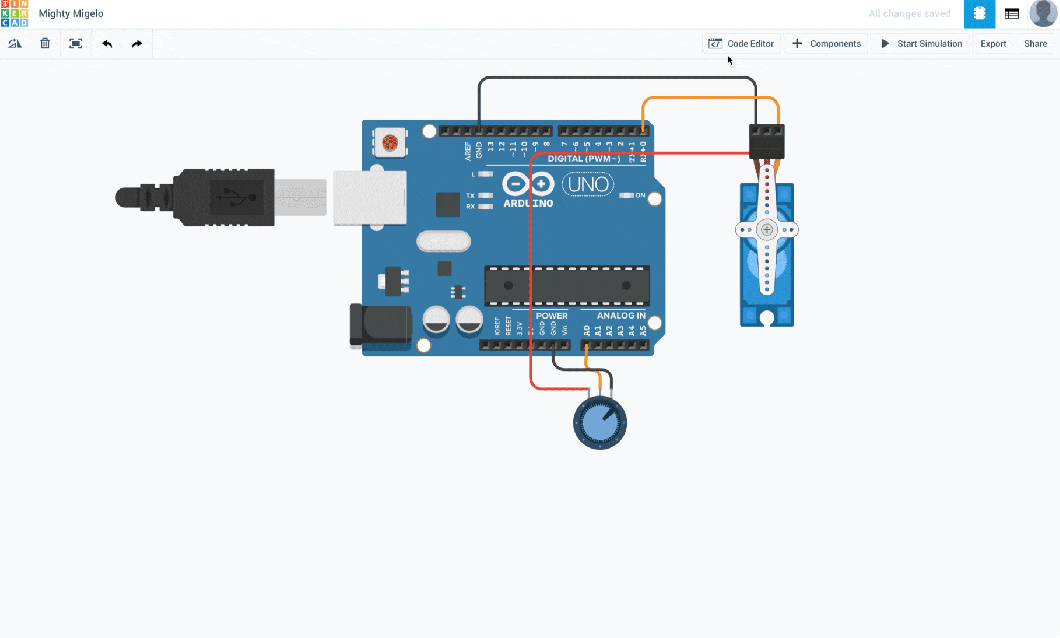Code blocks let you program Arduinos using drag-and-drop blocks. The blocks allow you to automatically build the text-based code in real time, so you can see exactly how Arduino code is formatted and then easily export your sketch to upload directly to an Arduino board. Check out the example below, where just two lines of block code help generate almost 30 lines of code!
Source: Code Blocks Powered by Scratch Blocks Now In Tinkercad! – Tinkercad Blog







